THE historian Timeri N. Murari notes in his writings on Calicut that the sea has long seduced those born in this coastal city. It looks deceptively innocent, caressing the white sands gently. There is no froth or phosphorescence, nothing excessively passionate about these waters off the Arabian Sea which are often referred to as the Lakshadweep Sea. Yet, for centuries Arabs have been ferrying back and forth across them. The Portuguese, Dutch, French and British too came across this very sea, the Malabar region attracting them like a magnet down the coast of Africa, round the Cape of Good Hope and across the burning stretch of the Arabian Sea.
They came in search of black gold � the Calicut pepper.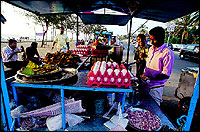 The story goes that nothing has changed in Calicut over the centuries. And if Vasco da Gama, the 15th century Portuguese sea-faring explorer, should magically return, he would recognise the Malabar coast instantly as nothing has changed here since 1498 when he first arrived. Actually, he did not land at Calicut but first stepped onto Indian soil some 20 kilometres away at a place called Kappad. It is a pleasant drive to Kappad where the beach is clean and bone white. Vasco da Gama, however, would have trouble finding his memorial here. Hidden away by the roadside on the way to the beach is the small cement monument on which a plaque notes: �Vasco-da-Gama landed here Kappadavu in the year 1498�. Sadly, the monument looks like a cheap afterthought for a man who travelled such a long way, a long time ago, across the Arabian Sea to spice up European food.
The story goes that nothing has changed in Calicut over the centuries. And if Vasco da Gama, the 15th century Portuguese sea-faring explorer, should magically return, he would recognise the Malabar coast instantly as nothing has changed here since 1498 when he first arrived. Actually, he did not land at Calicut but first stepped onto Indian soil some 20 kilometres away at a place called Kappad. It is a pleasant drive to Kappad where the beach is clean and bone white. Vasco da Gama, however, would have trouble finding his memorial here. Hidden away by the roadside on the way to the beach is the small cement monument on which a plaque notes: �Vasco-da-Gama landed here Kappadavu in the year 1498�. Sadly, the monument looks like a cheap afterthought for a man who travelled such a long way, a long time ago, across the Arabian Sea to spice up European food.
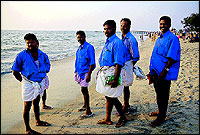 Timeri N. Murari is right, however, when he says that those born in Calicut are seduced by the sea. Unfortunately, the sands are not white anymore. They are black and dirty. But that does not prevent Calicut from giving of its best in the evenings when the citizenry gently strolls down the long and curving Beach Road from where you can look down to the coast of Africa to take in the air. Calicut�s past is reflected in its people. It is truly a secular town. Muslims, Christians, Jains (Gujarartis migrated here three centuries ago and conducted trade with their kin in East Africa) and Hindus live cheek-by-jowl. It is an immaculate city. And even though Kerala has a high density of people, you never feel crowded in. Even in the bazaars, there isn�t the chaotic, panicky push and shove of people. They are immensely polite, helpful and extremely articulate.
Timeri N. Murari is right, however, when he says that those born in Calicut are seduced by the sea. Unfortunately, the sands are not white anymore. They are black and dirty. But that does not prevent Calicut from giving of its best in the evenings when the citizenry gently strolls down the long and curving Beach Road from where you can look down to the coast of Africa to take in the air. Calicut�s past is reflected in its people. It is truly a secular town. Muslims, Christians, Jains (Gujarartis migrated here three centuries ago and conducted trade with their kin in East Africa) and Hindus live cheek-by-jowl. It is an immaculate city. And even though Kerala has a high density of people, you never feel crowded in. Even in the bazaars, there isn�t the chaotic, panicky push and shove of people. They are immensely polite, helpful and extremely articulate.
 Although Beypore, some distance away, is known for its dhow-building industry, the big ships sail to Cochin ever since the Calicut harbour died a small death in 1972. But now, the city is booming, there are tri-weekly flights to the Gulf, and Calicut exports its spices, skilled men and women, carpenters, boat-builders, cooks and clerks. Its main export is people. And it is people of all ages, castes, shapes and sizes that come down to the Beach Road in the evenings.
Although Beypore, some distance away, is known for its dhow-building industry, the big ships sail to Cochin ever since the Calicut harbour died a small death in 1972. But now, the city is booming, there are tri-weekly flights to the Gulf, and Calicut exports its spices, skilled men and women, carpenters, boat-builders, cooks and clerks. Its main export is people. And it is people of all ages, castes, shapes and sizes that come down to the Beach Road in the evenings.
Like a group of Moplah friends who indulge in a session of male bonding over local gossip and jokes, sitting on the promenade wall in their white lungis. And a team of Central Industrial Trade Union (CITU)-affiliated working class members who come to the beach straight from a labour meeting in their blue shirts. There is much that the beach has to offer them. As it does to the young Malabari Muslim families that come there. There is food: egg parathas and stuffed mussels; brightly coloured sherbets and fruit plates; pickled vegetables and ice-creams. And a long walk down the road to where an old lighthouse stands on guard.
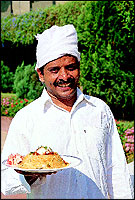 Further along the coast comes Court Road which is the main spice trading area. Here, by the sea, the road is wide and lined on either side by spice traders� offices and godowns. Of spices, there is not much evidence; however, coconut is in abundance everywhere you go in Calicut. Traders pile up coconuts on the streets and sort them out according to sizes. And handcart-pullers trundle heavy loads of coconut shell that makes an awesome and cheap fuel. Godowns stock copra from floor to ceiling. Not for nothing is Kerala known as the land of the coconut. But Calicut is also a city for antique furniture, old brass, earthenware cooking pots and vessels, and grinding stones on which Moplah housewives grind their daily masalas.
Further along the coast comes Court Road which is the main spice trading area. Here, by the sea, the road is wide and lined on either side by spice traders� offices and godowns. Of spices, there is not much evidence; however, coconut is in abundance everywhere you go in Calicut. Traders pile up coconuts on the streets and sort them out according to sizes. And handcart-pullers trundle heavy loads of coconut shell that makes an awesome and cheap fuel. Godowns stock copra from floor to ceiling. Not for nothing is Kerala known as the land of the coconut. But Calicut is also a city for antique furniture, old brass, earthenware cooking pots and vessels, and grinding stones on which Moplah housewives grind their daily masalas.
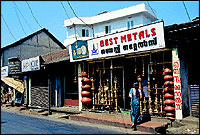 The old part of the city has narrow lanes with Malabar-style houses called taravads standing in shaded, peaceful gardens. The houses have courtyards sometimes in which spices, copra, ginger and pepper are spread out to dry on stone floors. A lot of families also grow arecanut in their backyards. But black pepper has easily been Calicut�s most precious commodity since Vasco da Gama�s time. The Portuguese came, bringing with them gold coins, in exchange the Malabari traders of Calicut gave them pepper � black gold! However, Calicut pepper has slipped considerably in the world market. Its exports are not between 20 and 50 per cent. The competition from Brazil and Indonesia is strong. Maybe today, Vasco da Gama would not have to sail to Calicut after all. He would get all he wanted in terms of spices and silk closer home. But not the beautiful women that made Arabs happy and who gave birth to the Moplah community. Nor the amazing cuisine which is yet to spread beyond Calicut despite efforts of caterers like K. V. Kabir here who is lured to other cities by hotels that use Moplah food in occasional food festivals.
The old part of the city has narrow lanes with Malabar-style houses called taravads standing in shaded, peaceful gardens. The houses have courtyards sometimes in which spices, copra, ginger and pepper are spread out to dry on stone floors. A lot of families also grow arecanut in their backyards. But black pepper has easily been Calicut�s most precious commodity since Vasco da Gama�s time. The Portuguese came, bringing with them gold coins, in exchange the Malabari traders of Calicut gave them pepper � black gold! However, Calicut pepper has slipped considerably in the world market. Its exports are not between 20 and 50 per cent. The competition from Brazil and Indonesia is strong. Maybe today, Vasco da Gama would not have to sail to Calicut after all. He would get all he wanted in terms of spices and silk closer home. But not the beautiful women that made Arabs happy and who gave birth to the Moplah community. Nor the amazing cuisine which is yet to spread beyond Calicut despite efforts of caterers like K. V. Kabir here who is lured to other cities by hotels that use Moplah food in occasional food festivals.
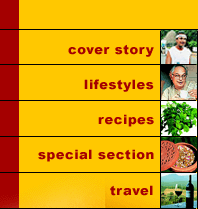
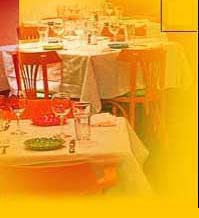



 Meeting Place Of The Malabari Muslims
Meeting Place Of The Malabari Muslims
 The story goes that nothing has changed in Calicut over the centuries. And if Vasco da Gama, the 15th century Portuguese sea-faring explorer, should magically return, he would recognise the Malabar coast instantly as nothing has changed here since 1498 when he first arrived. Actually, he did not land at Calicut but first stepped onto Indian soil some 20 kilometres away at a place called Kappad. It is a pleasant drive to Kappad where the beach is clean and bone white. Vasco da Gama, however, would have trouble finding his memorial here. Hidden away by the roadside on the way to the beach is the small cement monument on which a plaque notes: �Vasco-da-Gama landed here Kappadavu in the year 1498�. Sadly, the monument looks like a cheap afterthought for a man who travelled such a long way, a long time ago, across the Arabian Sea to spice up European food.
The story goes that nothing has changed in Calicut over the centuries. And if Vasco da Gama, the 15th century Portuguese sea-faring explorer, should magically return, he would recognise the Malabar coast instantly as nothing has changed here since 1498 when he first arrived. Actually, he did not land at Calicut but first stepped onto Indian soil some 20 kilometres away at a place called Kappad. It is a pleasant drive to Kappad where the beach is clean and bone white. Vasco da Gama, however, would have trouble finding his memorial here. Hidden away by the roadside on the way to the beach is the small cement monument on which a plaque notes: �Vasco-da-Gama landed here Kappadavu in the year 1498�. Sadly, the monument looks like a cheap afterthought for a man who travelled such a long way, a long time ago, across the Arabian Sea to spice up European food. Timeri N. Murari is right, however, when he says that those born in Calicut are seduced by the sea. Unfortunately, the sands are not white anymore. They are black and dirty. But that does not prevent Calicut from giving of its best in the evenings when the citizenry gently strolls down the long and curving Beach Road from where you can look down to the coast of Africa to take in the air. Calicut�s past is reflected in its people. It is truly a secular town. Muslims, Christians, Jains (Gujarartis migrated here three centuries ago and conducted trade with their kin in East Africa) and Hindus live cheek-by-jowl. It is an immaculate city. And even though Kerala has a high density of people, you never feel crowded in. Even in the bazaars, there isn�t the chaotic, panicky push and shove of people. They are immensely polite, helpful and extremely articulate.
Timeri N. Murari is right, however, when he says that those born in Calicut are seduced by the sea. Unfortunately, the sands are not white anymore. They are black and dirty. But that does not prevent Calicut from giving of its best in the evenings when the citizenry gently strolls down the long and curving Beach Road from where you can look down to the coast of Africa to take in the air. Calicut�s past is reflected in its people. It is truly a secular town. Muslims, Christians, Jains (Gujarartis migrated here three centuries ago and conducted trade with their kin in East Africa) and Hindus live cheek-by-jowl. It is an immaculate city. And even though Kerala has a high density of people, you never feel crowded in. Even in the bazaars, there isn�t the chaotic, panicky push and shove of people. They are immensely polite, helpful and extremely articulate. Although Beypore, some distance away, is known for its dhow-building industry, the big ships sail to Cochin ever since the Calicut harbour died a small death in 1972. But now, the city is booming, there are tri-weekly flights to the Gulf, and Calicut exports its spices, skilled men and women, carpenters, boat-builders, cooks and clerks. Its main export is people. And it is people of all ages, castes, shapes and sizes that come down to the Beach Road in the evenings.
Although Beypore, some distance away, is known for its dhow-building industry, the big ships sail to Cochin ever since the Calicut harbour died a small death in 1972. But now, the city is booming, there are tri-weekly flights to the Gulf, and Calicut exports its spices, skilled men and women, carpenters, boat-builders, cooks and clerks. Its main export is people. And it is people of all ages, castes, shapes and sizes that come down to the Beach Road in the evenings.  Further along the coast comes Court Road which is the main spice trading area. Here, by the sea, the road is wide and lined on either side by spice traders� offices and godowns. Of spices, there is not much evidence; however, coconut is in abundance everywhere you go in Calicut. Traders pile up coconuts on the streets and sort them out according to sizes. And handcart-pullers trundle heavy loads of coconut shell that makes an awesome and cheap fuel. Godowns stock copra from floor to ceiling. Not for nothing is Kerala known as the land of the coconut. But Calicut is also a city for antique furniture, old brass, earthenware cooking pots and vessels, and grinding stones on which Moplah housewives grind their daily masalas.
Further along the coast comes Court Road which is the main spice trading area. Here, by the sea, the road is wide and lined on either side by spice traders� offices and godowns. Of spices, there is not much evidence; however, coconut is in abundance everywhere you go in Calicut. Traders pile up coconuts on the streets and sort them out according to sizes. And handcart-pullers trundle heavy loads of coconut shell that makes an awesome and cheap fuel. Godowns stock copra from floor to ceiling. Not for nothing is Kerala known as the land of the coconut. But Calicut is also a city for antique furniture, old brass, earthenware cooking pots and vessels, and grinding stones on which Moplah housewives grind their daily masalas. The old part of the city has narrow lanes with Malabar-style houses called taravads standing in shaded, peaceful gardens. The houses have courtyards sometimes in which spices, copra, ginger and pepper are spread out to dry on stone floors. A lot of families also grow arecanut in their backyards. But black pepper has easily been Calicut�s most precious commodity since Vasco da Gama�s time. The Portuguese came, bringing with them gold coins, in exchange the Malabari traders of Calicut gave them pepper � black gold! However, Calicut pepper has slipped considerably in the world market. Its exports are not between 20 and 50 per cent. The competition from Brazil and Indonesia is strong. Maybe today, Vasco da Gama would not have to sail to Calicut after all. He would get all he wanted in terms of spices and silk closer home. But not the beautiful women that made Arabs happy and who gave birth to the Moplah community. Nor the amazing cuisine which is yet to spread beyond Calicut despite efforts of caterers like K. V. Kabir here who is lured to other cities by hotels that use Moplah food in occasional food festivals.
The old part of the city has narrow lanes with Malabar-style houses called taravads standing in shaded, peaceful gardens. The houses have courtyards sometimes in which spices, copra, ginger and pepper are spread out to dry on stone floors. A lot of families also grow arecanut in their backyards. But black pepper has easily been Calicut�s most precious commodity since Vasco da Gama�s time. The Portuguese came, bringing with them gold coins, in exchange the Malabari traders of Calicut gave them pepper � black gold! However, Calicut pepper has slipped considerably in the world market. Its exports are not between 20 and 50 per cent. The competition from Brazil and Indonesia is strong. Maybe today, Vasco da Gama would not have to sail to Calicut after all. He would get all he wanted in terms of spices and silk closer home. But not the beautiful women that made Arabs happy and who gave birth to the Moplah community. Nor the amazing cuisine which is yet to spread beyond Calicut despite efforts of caterers like K. V. Kabir here who is lured to other cities by hotels that use Moplah food in occasional food festivals.